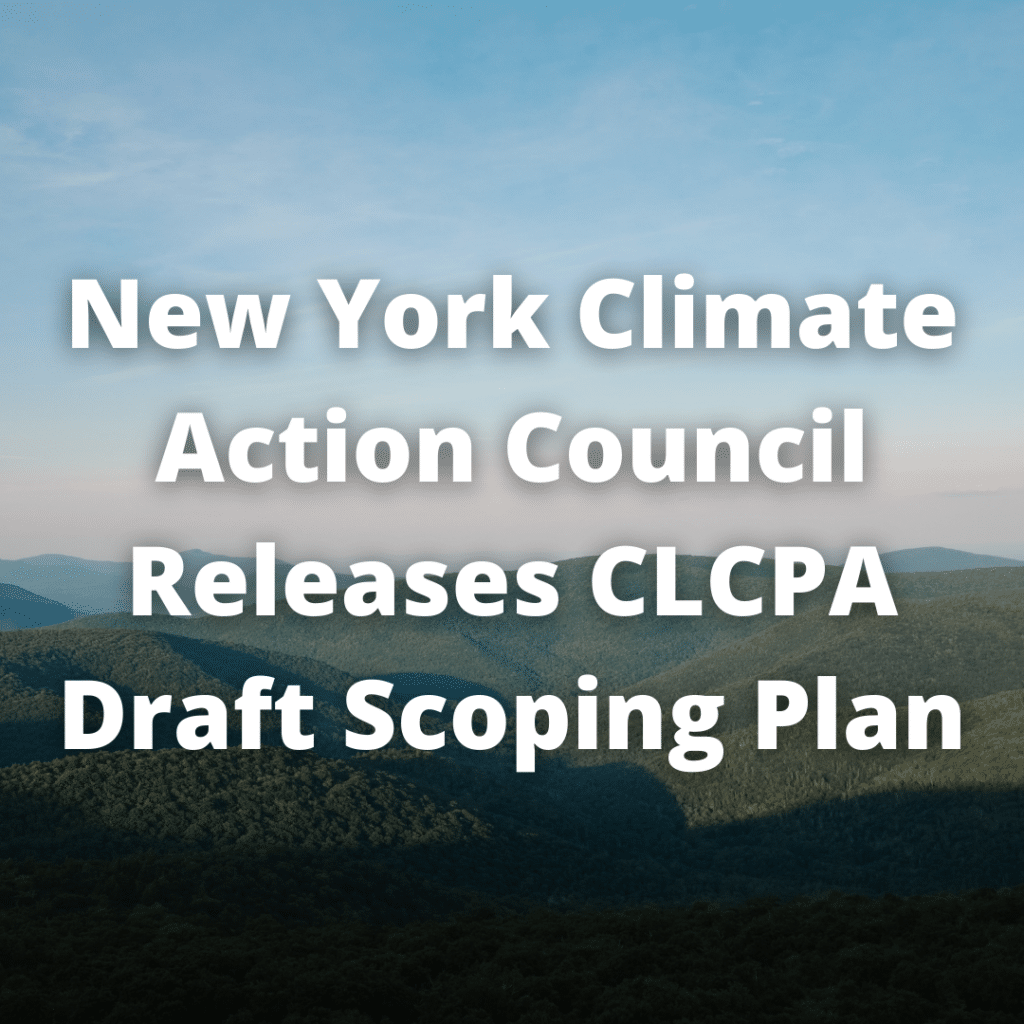Blog

New York Climate Action Council Releases CLCPA Draft Scoping Plan
On December 30, 2021, the New York State Climate Action Council released the Draft Scoping Plan for the Climate Leadership and Community Protection Act (Draft Scoping Plan) for public review and comment. The Draft Scoping Plan recommends policies and actions to help New York meet the ambitious climate goals articulated in the Climate Leadership and Community Protection Act (CLCPA) and represents an important milestone in New York’s efforts to reduce GHG emissions.
As previously discussed on the SPR Blog, the CLCPA, which was enacted in 2019, requires statewide greenhouse gas (GHG) emissions reductions of 40% by 2030 and 85% by 2050 compared to 1990 baseline levels. The CLCPA also mandates that the State derive 70% of its electricity from renewable energy by 2030 and procure 9,000 MW of offshore wind by 2035, 3,000 MW of energy storage by 2030, and 6,000 MW of solar by 2025. The Climate Action Council, an entity created by the CLCPA and comprised of representatives from state agencies and other key stakeholders, was charged with developing a scoping plan to make recommendations on regulatory measures and other actions that will help New York achieve these ambitious goals.
The Draft Scoping Plan, which is a comprehensive 341-page document, reflects the Council Action Council’s careful consultation with sector-specific advisory panels and working groups established by the CLCPA, including the Climate Justice Working Group and Just Transition Working Group (which advises on workforce issues). The Draft Scoping Plan sets forth a detailed framework for achieving the State’s climate goals, making recommendations in the transportation, building, electricity, industrial, agricultural and forestry, and waste sectors. The Draft Scoping Plan makes clear that achieving the CLCPA’s emissions targets will require transformative actions and investments across all sectors of the State’s economy, and highlights the importance of energy efficiency and end-use electrification in meeting emissions goals. It requires offshore wind, solar, and battery storage to power most of New York’s economy by 2050.
Some of the key measures identified in the Draft Scoping Plan include:
- Heat pumps will need to be electrified, and a transition to low-Global Warming Potential refrigerants in heat pumps will required.
- Reductions in vehicle miles traveled and increased utilization of public transport will be necessary. Consumers will need to choose to adopt zero-emission vehicles.
- Low-carbon fuels will play a role in decarbonizing economic sectors that are challenging to electrify.
- Carbon sequestration will be an important component of achieving the State’s goals, and negative emissions technologies (such as carbon capture and storage) may be required.
- Methane emissions in waste and agriculture will require careful attention and mitigation.
- Continued research and innovation will be needed, particularly with respect to carbon sequestration, energy storage, refrigerants, and animal feeding.
The Draft Scoping Plan details specific strategies to address each of these areas.
The Draft Scoping Plan is currently undergoing a 120-day public comment period, and public comment hearing dates will be announced in early 2022. Public input will be used to help develop the Final Scoping Plan, which must be completed by January 1, 2023. The New York State Department of Environmental Conservation will then publish regulations consistent with the Final Scoping Plan by January 1, 2024.
The Draft Scoping Plan is a comprehensive, detailed assessment of New York’s pathways to emissions reduction across all sectors. Although much more work remains, it represents a crucial step towards achieving the State’s ambitious climate goals and provides a clear signal to the regulated community of what is to come.